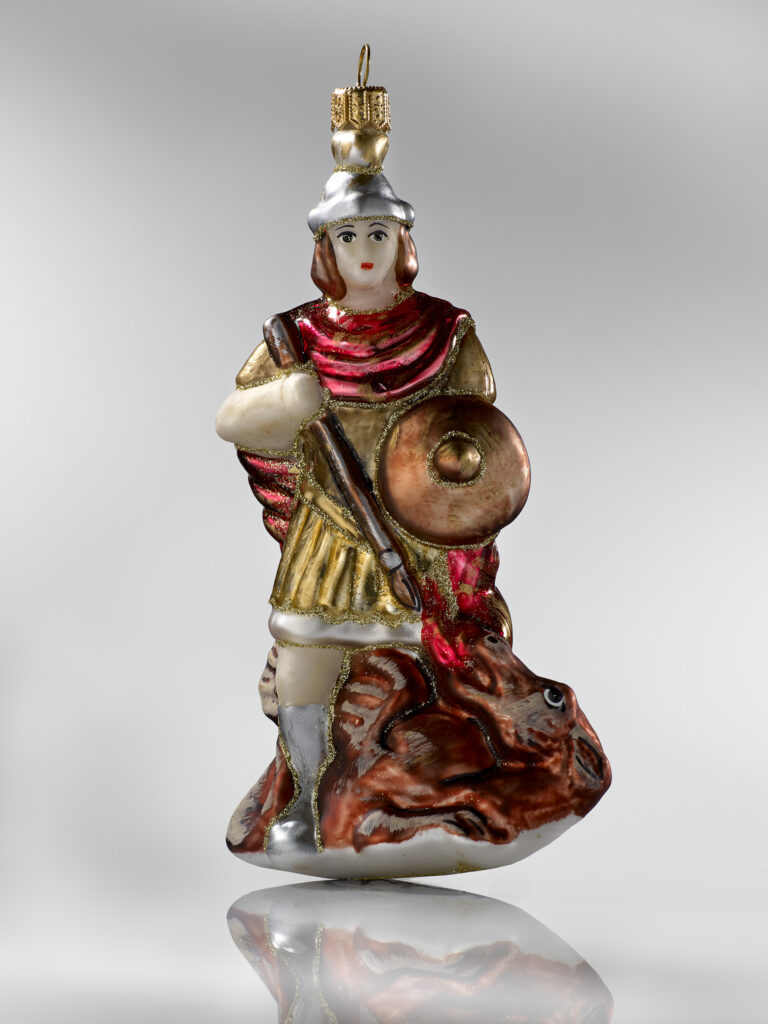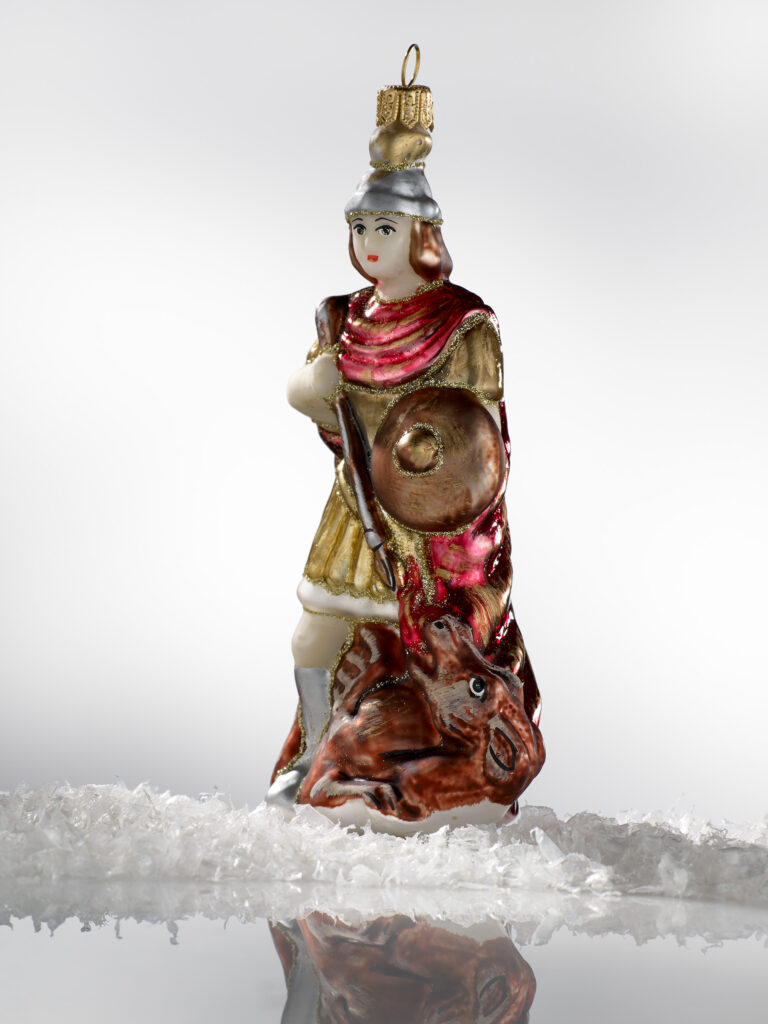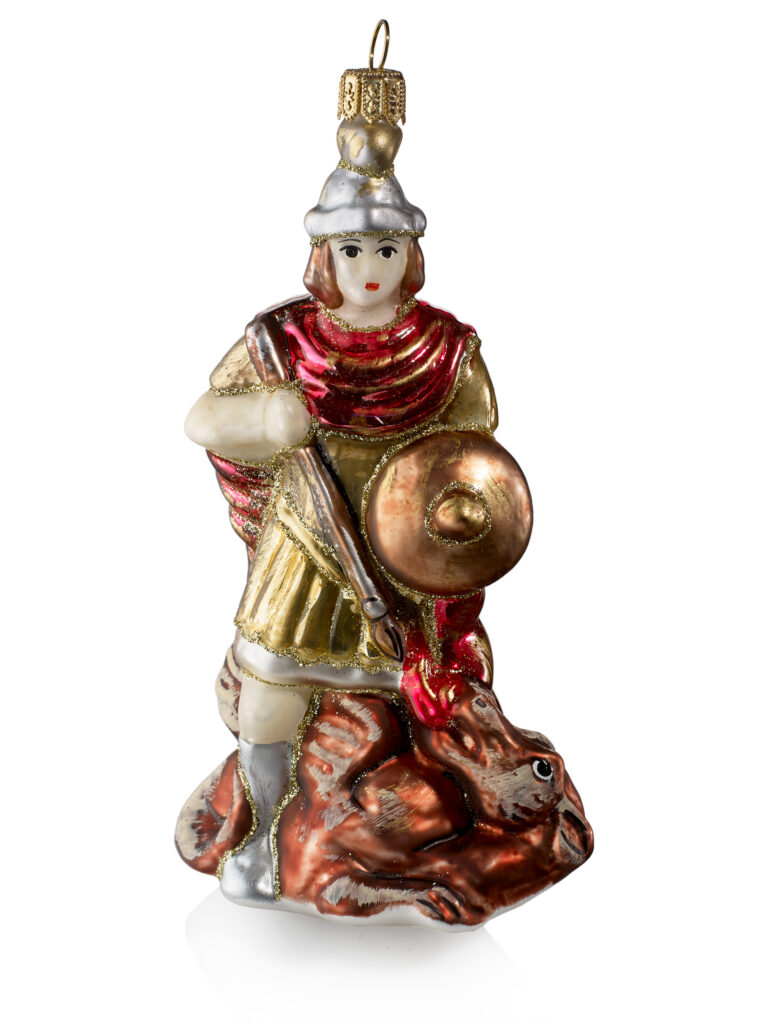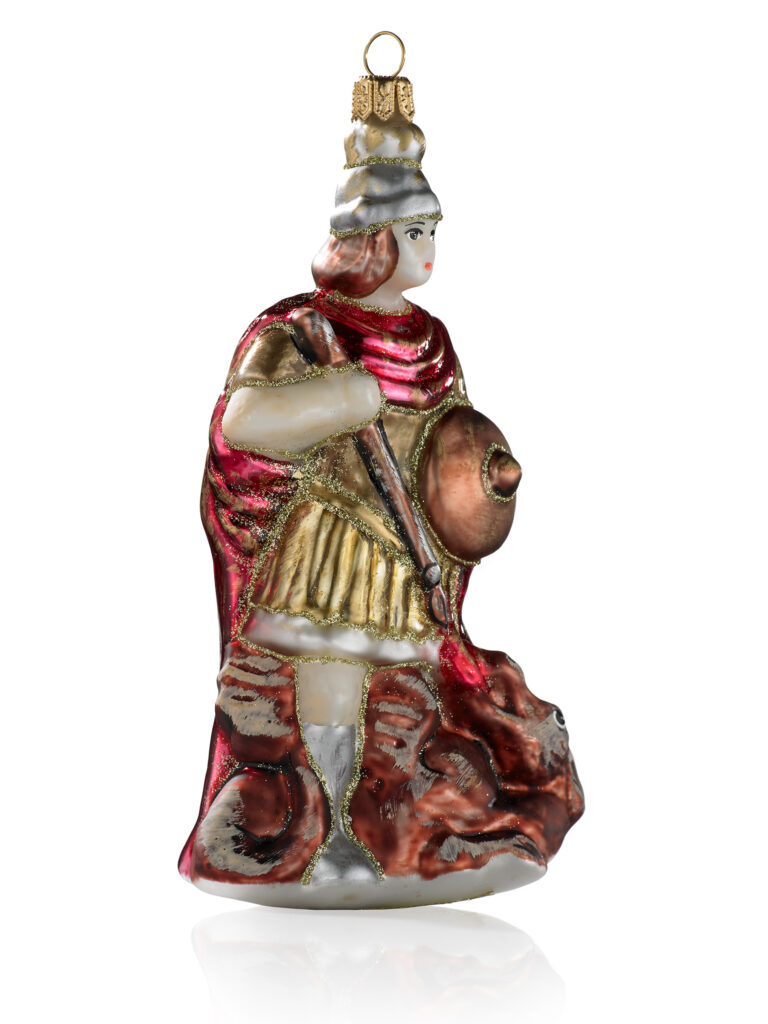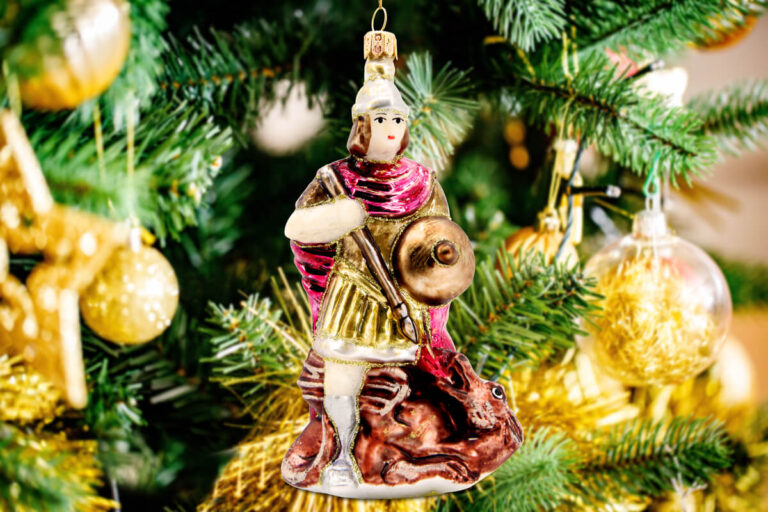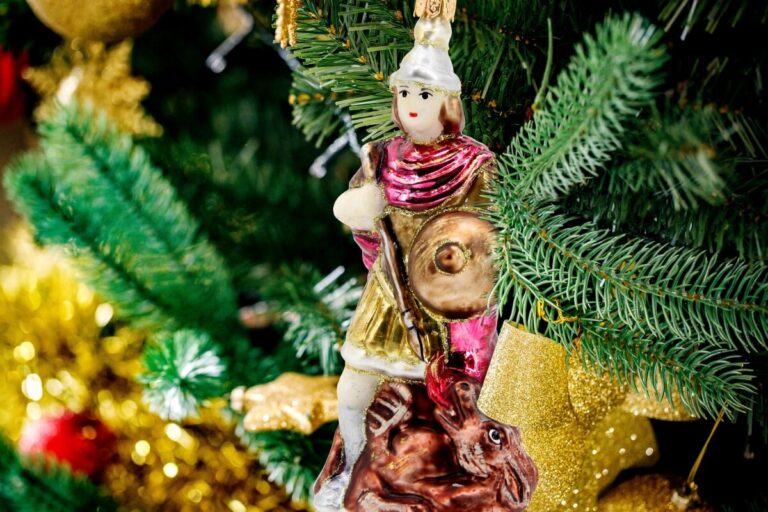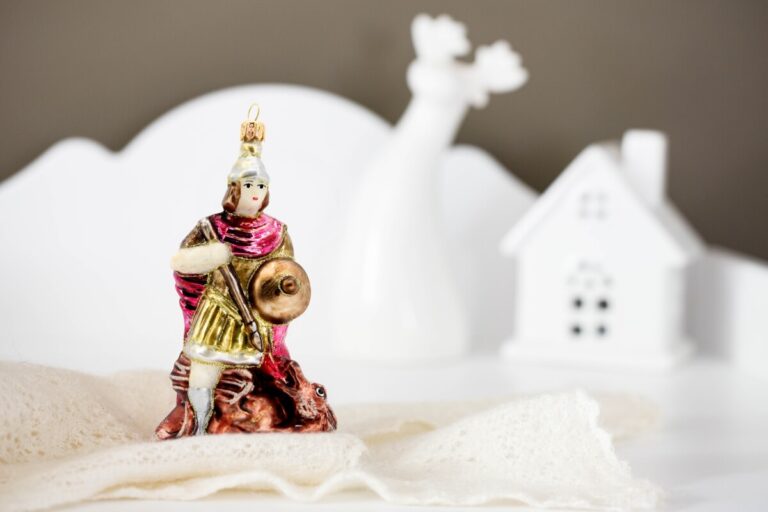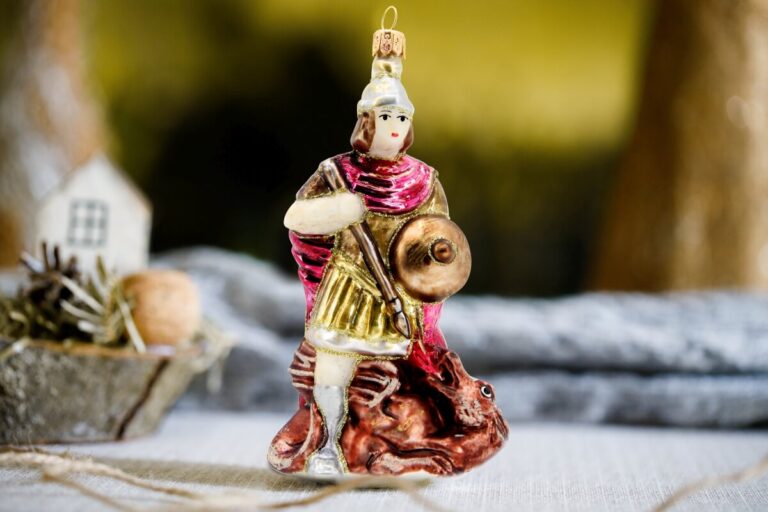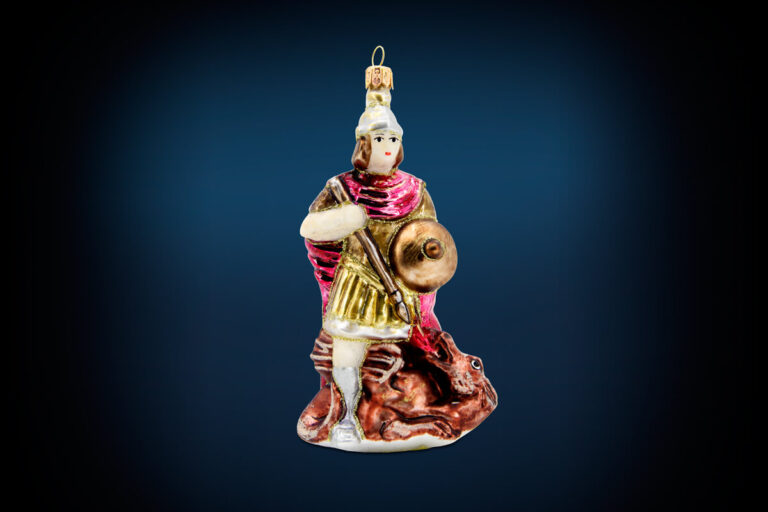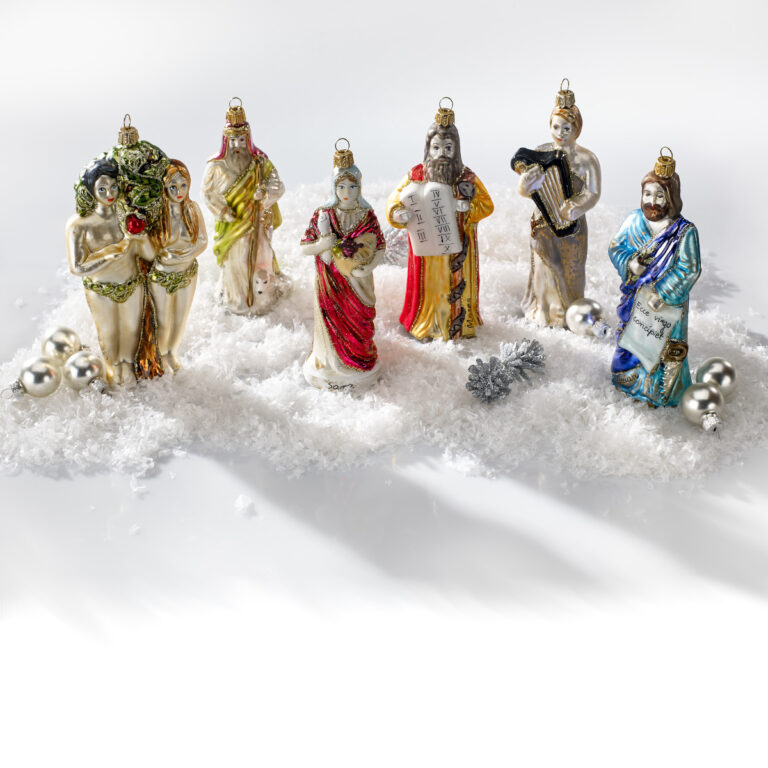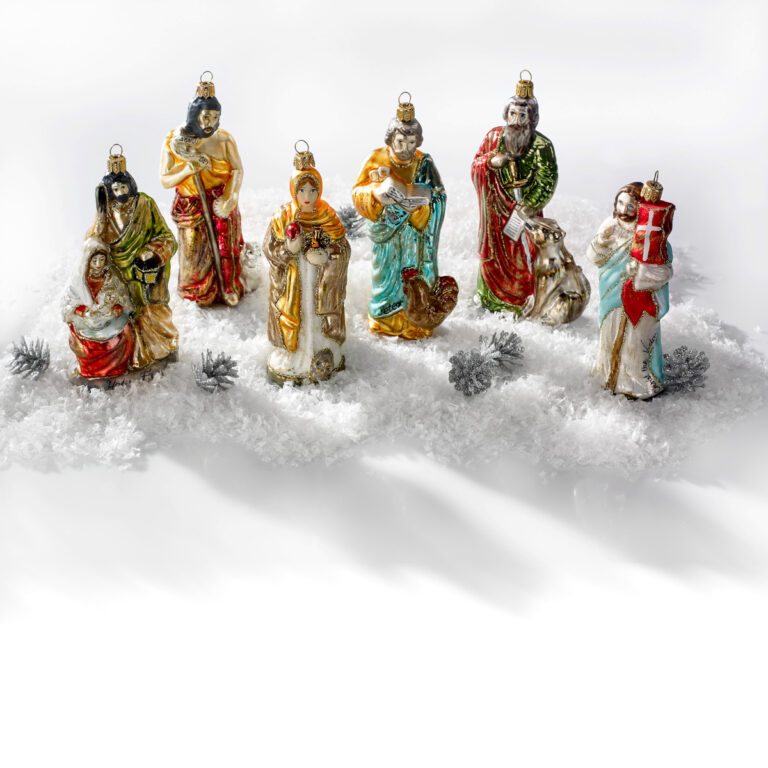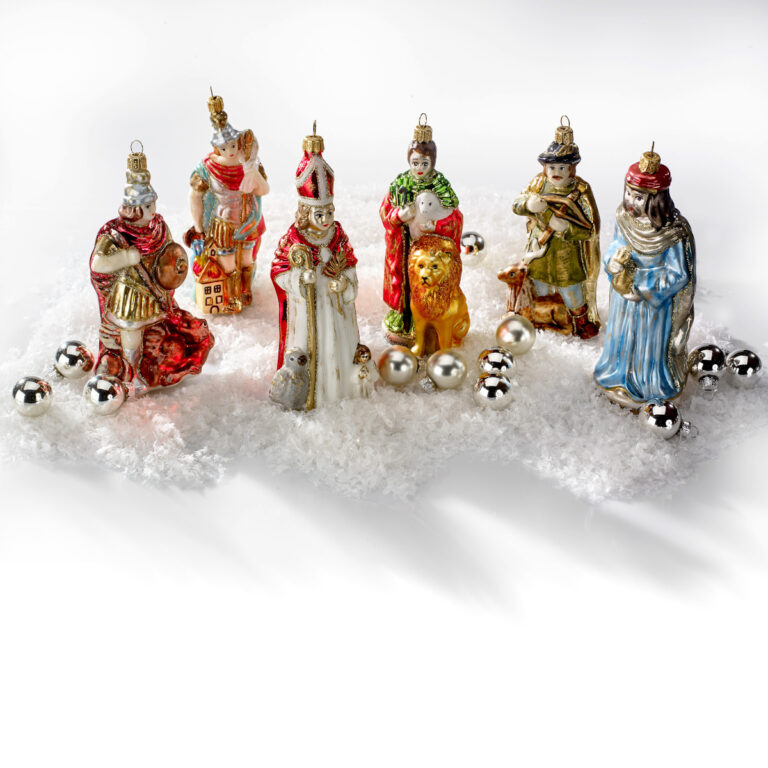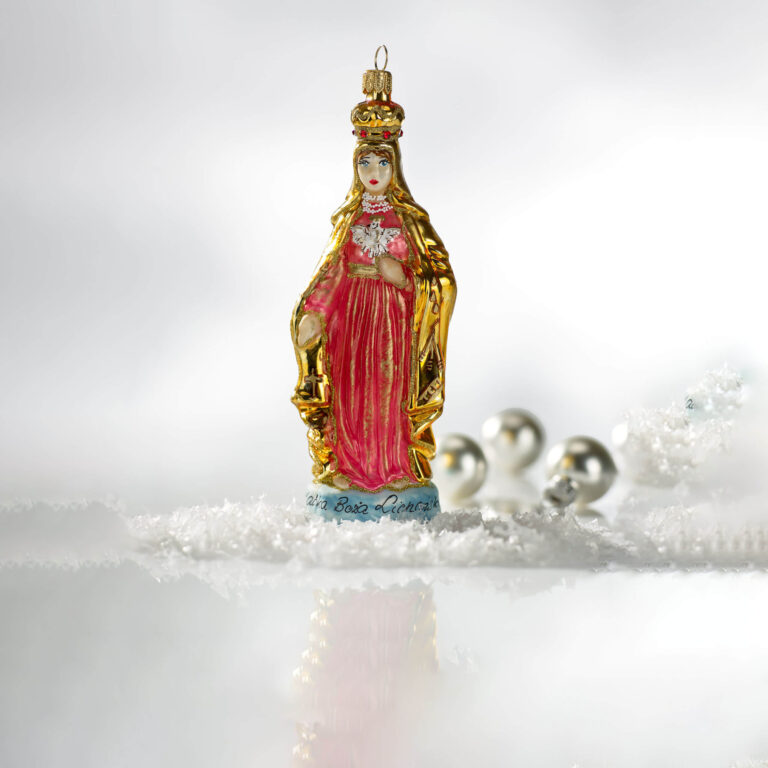George
The Christmas ball represents a figure of Saint George. It is designed to be hung on a Christmas Tree or exposed on a display stand.
Saint George is presented in the outfit of a Roman legionary. In his hands he is holding a lance and a shield, and at his feet there is a defeated dragon.
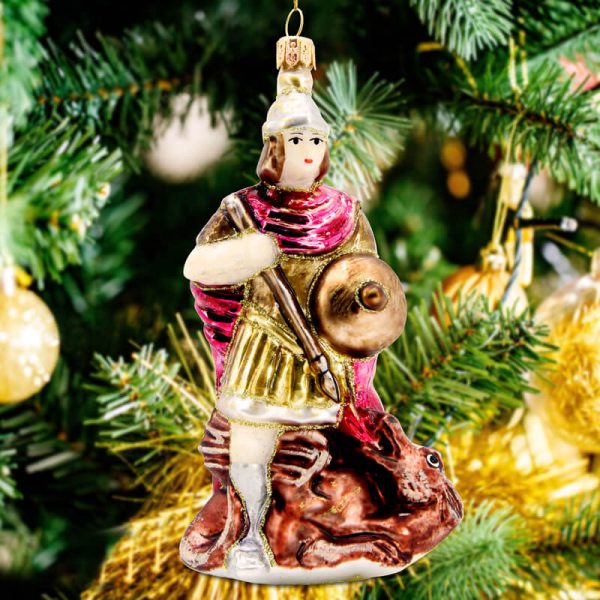
Attributes
A lance
The lance is a weapon with which George slew the dragon. In legends the lance is called Ascalon after the Levantine city of Ashkelon, today in Israel.
A shield
The shield symbolises the God’s protection over the fighters for a just cause.
A defeated dragon
he defeated dragon is a figure from the allegorical story of the victory of Saint George, the fighter of God, against the forces of Hell symbolised by the dragon.
What do we remember from the life of Saint George:
- He lived in the late 3rd and early 4th century. We do not know the exact date of his birth, we only know that it took place in Cappadocia (now Turkey). He died a martyr’s death on 23rd April 303 in Nicomedia (now Izmit in Turkey).
- His parents were Gerontius, Persian, and Polocronia, a Jewish woman, both converted to Christianity.
- He was a child whose advanced in age parents were praying for.
- He joined the Roman legionaries and quickly rose through the ranks, he was responsible for protecting Emperor Diocletian.
- He refused to persecute Christians and to offer sacrifice to the Roman gods.
- He was sentenced to torture that lasted seven years. As a result, he is venerated as a megalomartyr (or the Great Martyr) by the Eastern Orthodox Church.
- He was eventually killed by beheading.
- The Empress Alexandra converted to Christianity thanks to George’s martyrdom, and so she died together with him; later she was also canonised.
- The body of the saint was moved to Lydda (now Lod in Israel), where George’s mother came from.
- He was particularly venerated by the participants of the Crusades, including Richard the Lionheart.
- In the Middle Ages the legend of St George fighting the dragon quickly spread.
- George is one of the Fourteen Holy Helpers.
- His cult is still widespread today, and it is reflected both in heraldry and in granting his patronage to countries, regions, cities, guilds, monasteries, and temples.
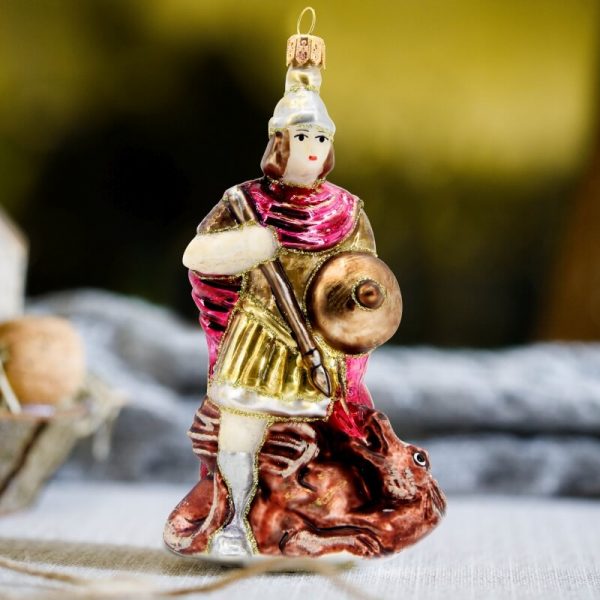
George is one of the Fourteen Holy Helpers for the Catholics. It is a group of saints whose help has been especially efficient over the centuries. In addition to Catholics, St George is also venerated by Orthodox Christians under the name of George the Victorious.
The name George comes from Greek
and it means "earthworker"- a farmer.
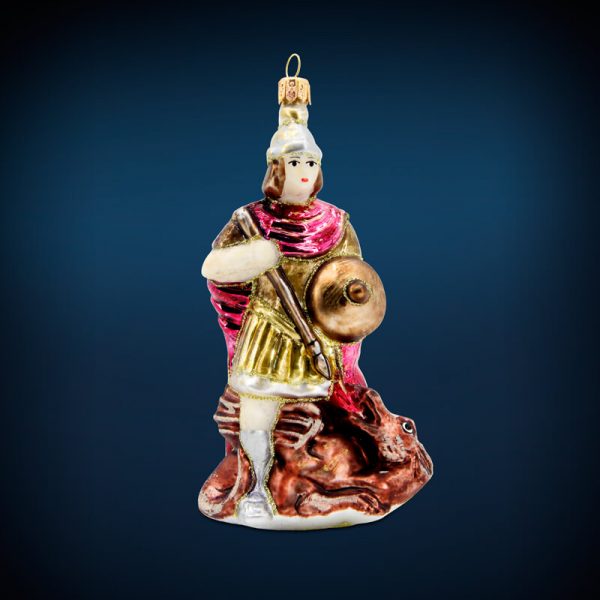
Saint George is the patron saint of all the professions that originate from knighthood and are related to weapons, that are soldiers, cavalrymen, armourers, and gunsmiths. Scouts all over the world venerate him as their special patron saint. Because of the significance of his name, farmers and also prisoners, whose long imprisonment precedes their martyrdom, seek refuge under his protection. Coopers, blacksmiths, and artists also consider St George their patron saint. The saint is especially fervently prayed to during epidemics. People struggling with dermatological and venereal diseases, and also lepers call on his intercession.
Browse collections
How can I order a set of
educational baubles?
Check how to order this unique collection of educational Christmas baubles now and together with your child discover how pleasant and enjoyable it is to learn about Salvation through stories.
If you want to receive information
about news – enter your e-mail
We will process your data in accordance with our Privacy Policy.
